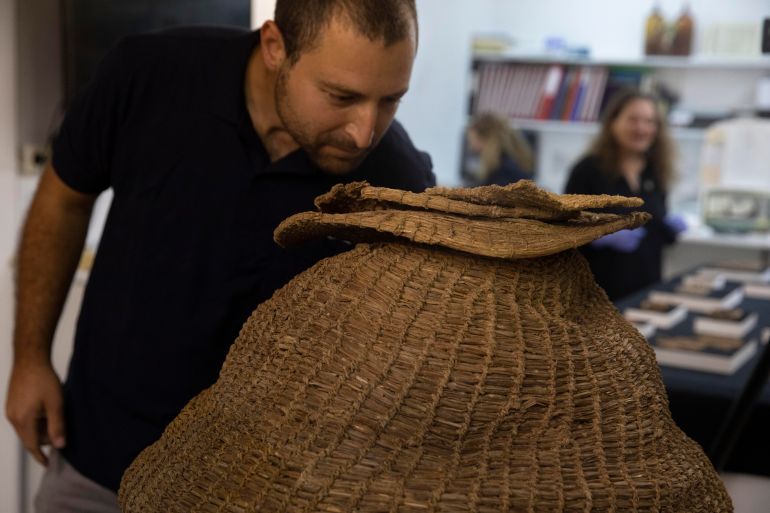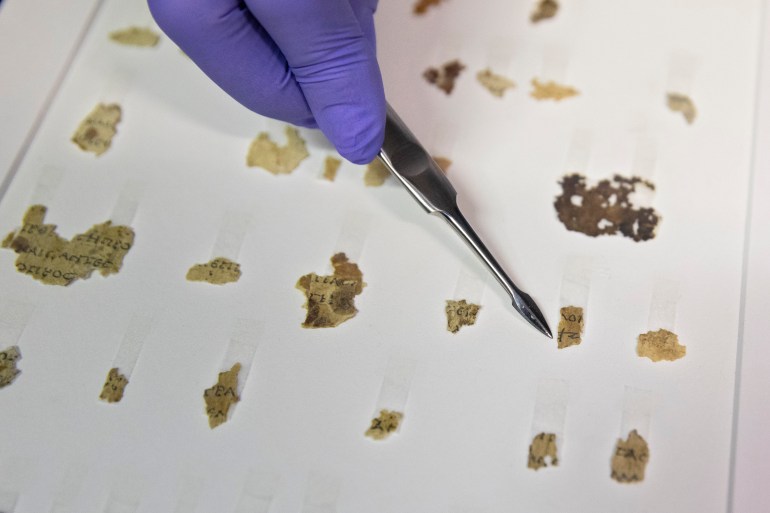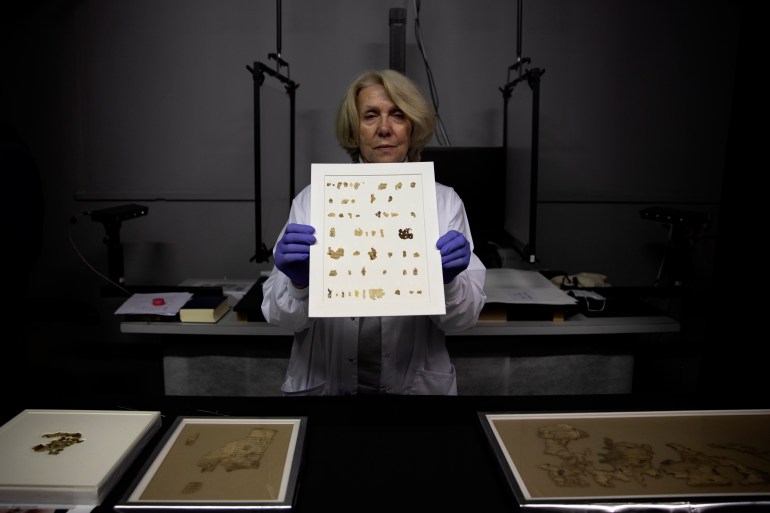Israeli archeologists discover ancient Dead Sea Scroll fragments
Desert cave find includes 1,900-year-old parchment pieces bearing biblical verse written in Greek.

Israeli archaeologists on Tuesday announced the discovery of dozens of Dead Sea Scroll fragments bearing a biblical text found in a desert cave and believed hidden during a Jewish revolt against Rome nearly 1,900 years ago.
The finds, preserved by the hot, dry air of the Judean Desert, also include the 6,000-year-old partly mummified skeleton of a child, and a perfectly intact woven basket dating back 10,500 years that the Israel Antiquities Authority (IAA) said was likely to be the oldest in the world.
Keep reading
list of 4 itemsIsrael museum postpones sale of Islamic antiquities after outrage
Auction of ‘stolen’ Nigerian treasures goes ahead in Paris
Archeologists unearth intact ancient Roman chariot near Pompeii
The Dead Sea Scrolls, a collection of Jewish texts found in desert caves in the West Bank near Qumran in the 1940s and 50s, date from the third century BC to the first century AD. They include the earliest known copies of biblical texts and documents outlining the beliefs of a little-understood Jewish sect.
The roughly 80 new pieces are believed to belong to a set of parchment fragments found in a site in southern Israel known as the “Cave of Horror” — named for the 40 human skeletons found there during excavations in the 1960s.
“These are new pieces of the puzzle and we can add them to our greater picture of the period and of the text,” said Oren Ableman of the Israel Antiquities Authority’s Dead Sea Scrolls Unit.
“Even though these pieces are small they did give us some new information that we did not know before.”

The fragments are believed to have been part of a scroll stashed away in the cave during the Bar Kochba Revolt, an armed Jewish uprising against Rome during the reign of Emperor Hadrian, between 132 and 136. Coins struck by rebels and arrowheads found in other caves in the region also hail from that period.
The cave is located in a remote canyon about 40km (25 miles) south of Jerusalem.
The artefacts were found during an operation in Israel and the occupied West Bank conducted by the Israel Antiquities Authority to find scrolls and other artefacts to prevent possible plundering.
The authority has overseen a survey of more than 100km (65 miles) of cliffs and the caves carved or eroded into them.
Since 2017, crews have been abseiling down marl and limestone cliffs and using drones to map hundreds of caves and hollows. Many were filled with centuries of sand and debris, and about a dozen thought to be likely hiding places were excavated fully.
The aim of the project is to find artefacts before plunderers disturb the remote sites, destroying archaeological strata and data in search of antiquities bound for the black market.
Amir Ganor, head of the antiquities theft prevention unit, said since the commencement of the IAA’s operation there has been virtually no antiquities plundering in the Judean Desert.
“For the first time in 70 years, we were able to preempt the plunderers,” he said.

In 1961, Israeli archaeologist Yohanan Aharoni excavated the Cave of Horror and his team found nine parchment fragments belonging to a scroll with texts from the Twelve Minor Prophets in Greek, and a scrap of Greek papyrus.
Since then, no new texts had been found during archaeological excavations, but many have turned up on the black market, apparently plundered from caves.
“Every little piece of information that we can add, we can understand a little bit better” how the biblical text came into its traditional Hebrew form, said Joe Uziel, head of the antiquities authority’s Dead Sea Scrolls Unit.
Alongside the Roman-era artefacts, the find included far older discoveries of no lesser importance: the 6,000-year-old mummified skeleton of a child, a complete woven basket from the Neolithic period, estimated to be 10,500 years old, and scores of other delicate organic materials preserved in caves’ arid climate.
